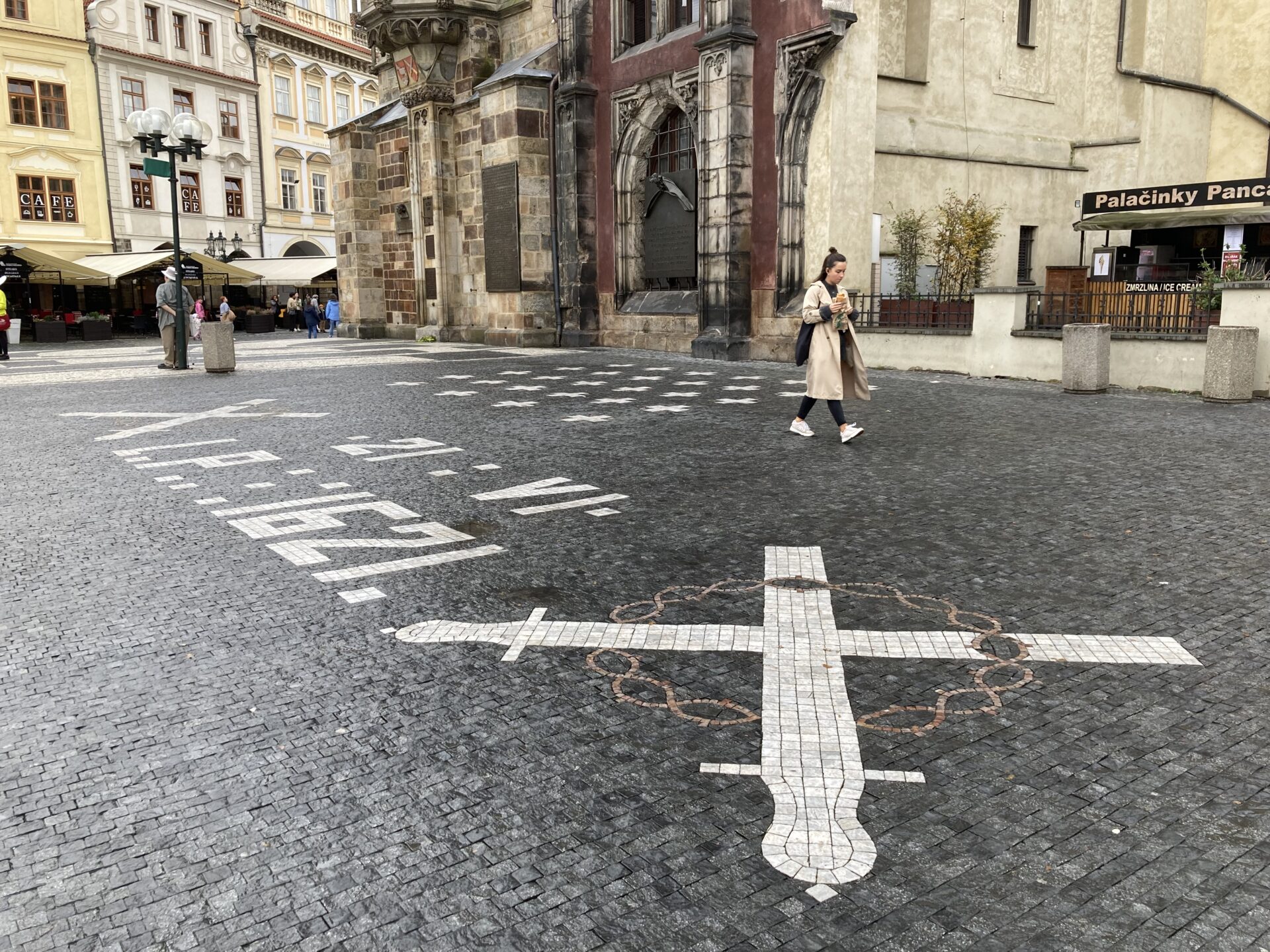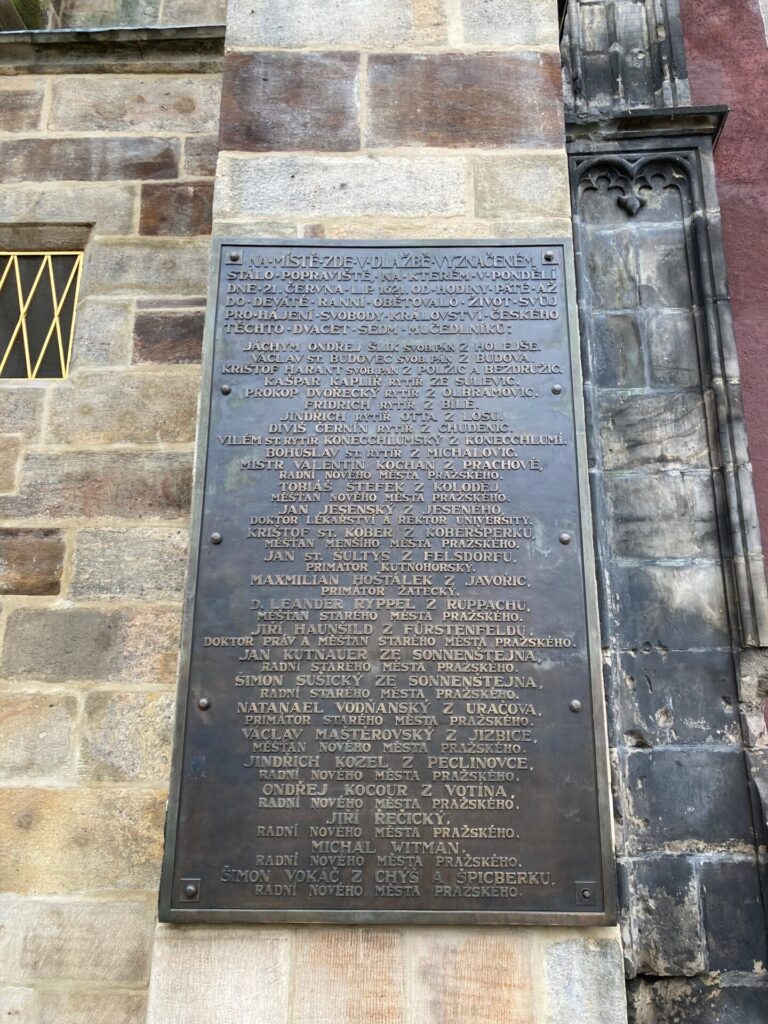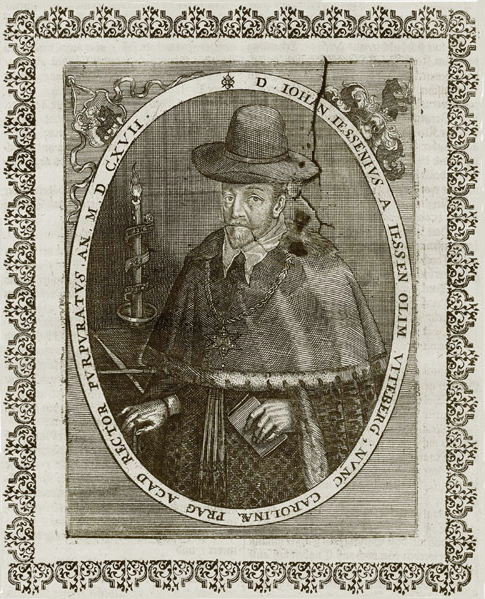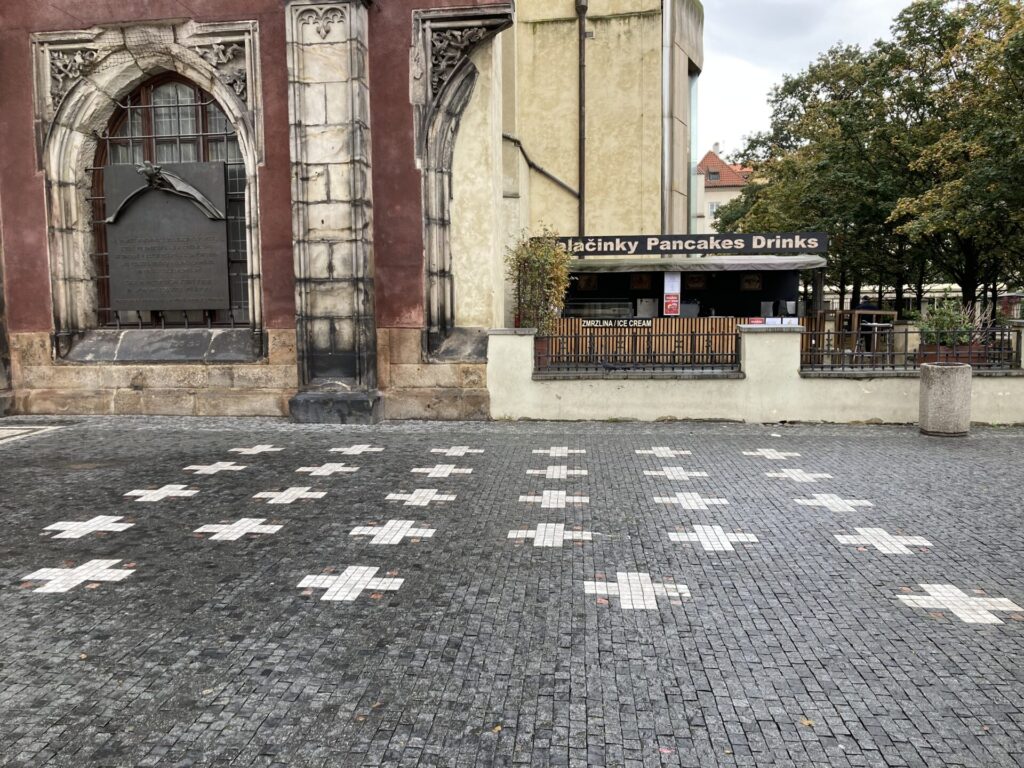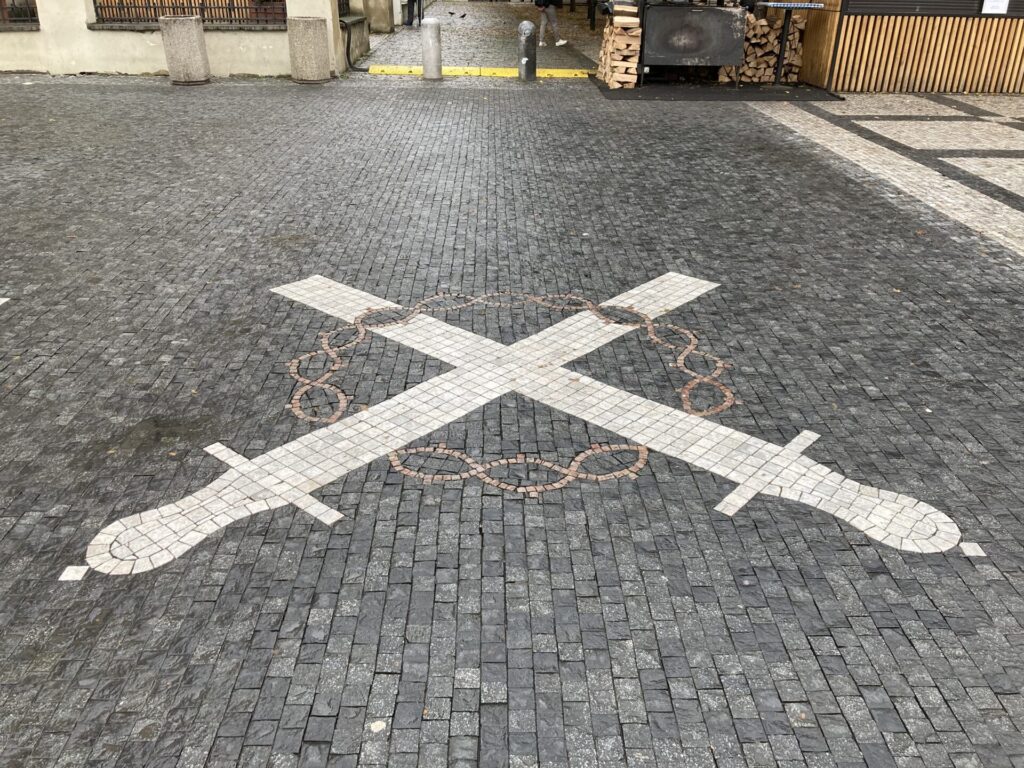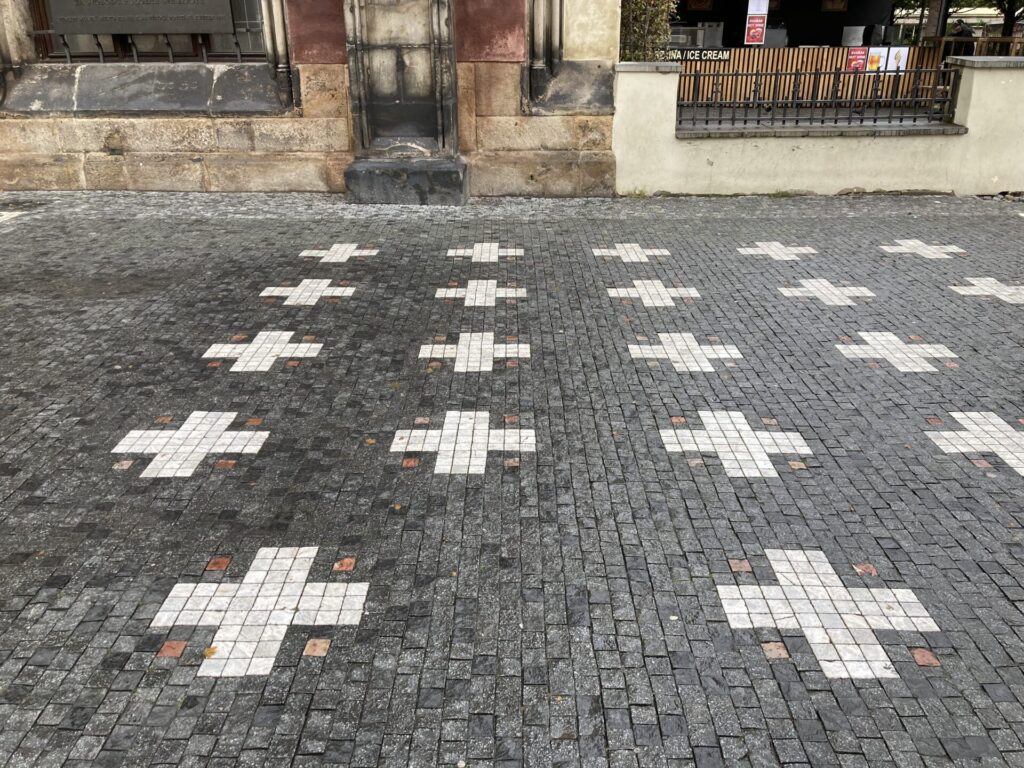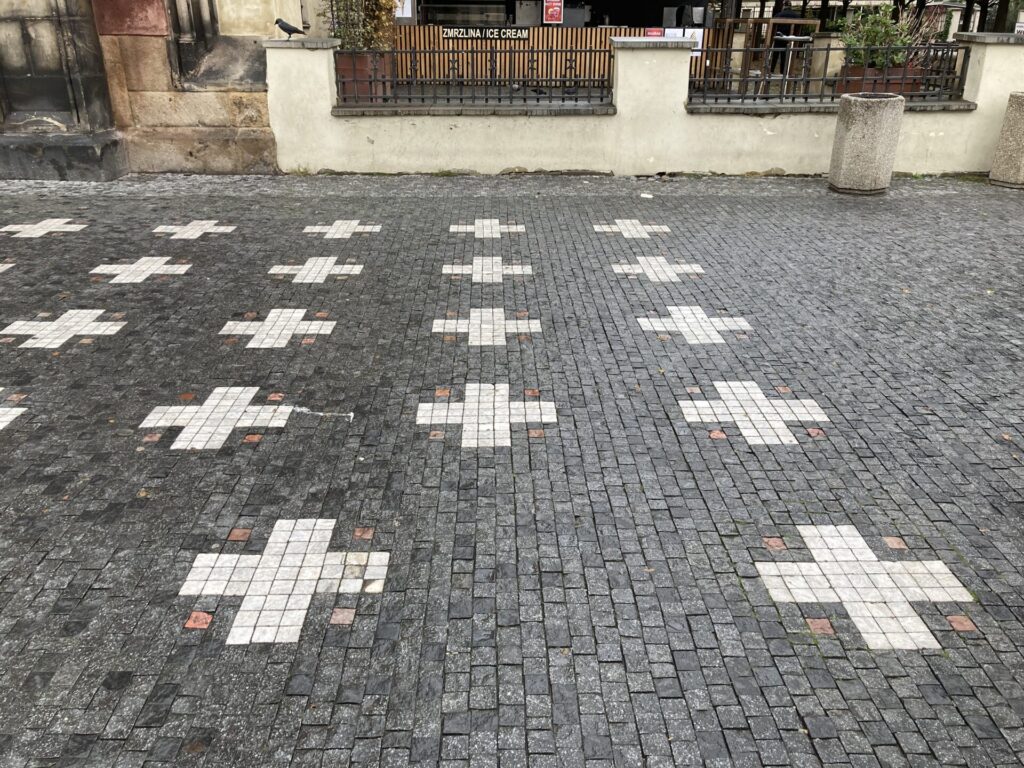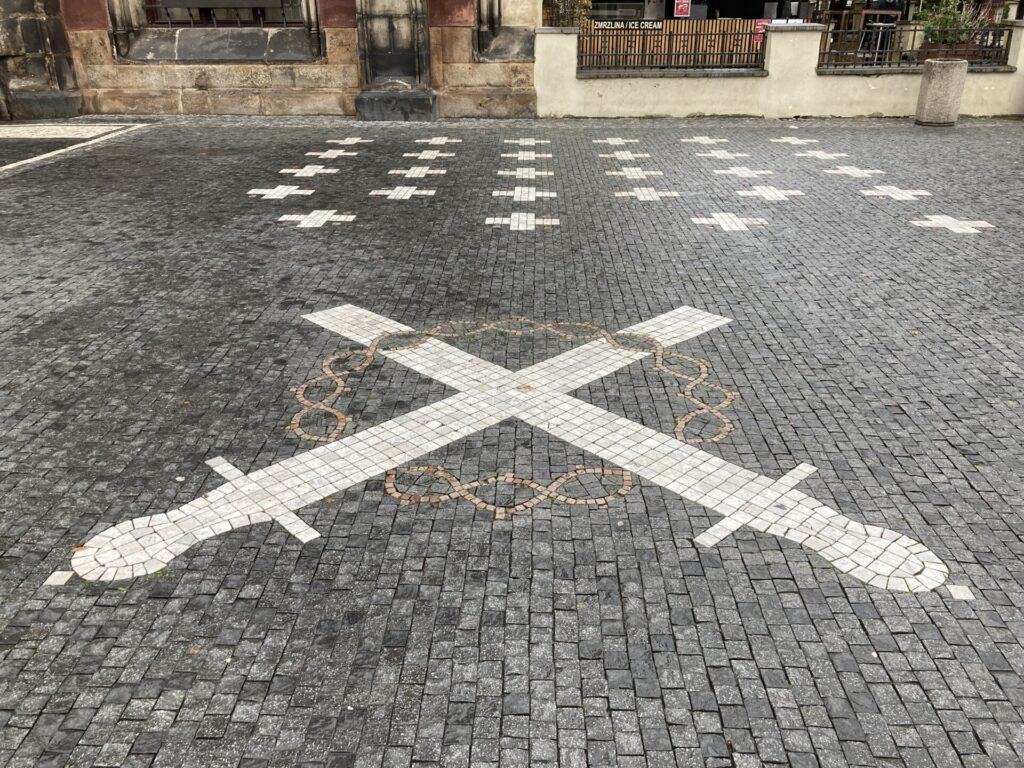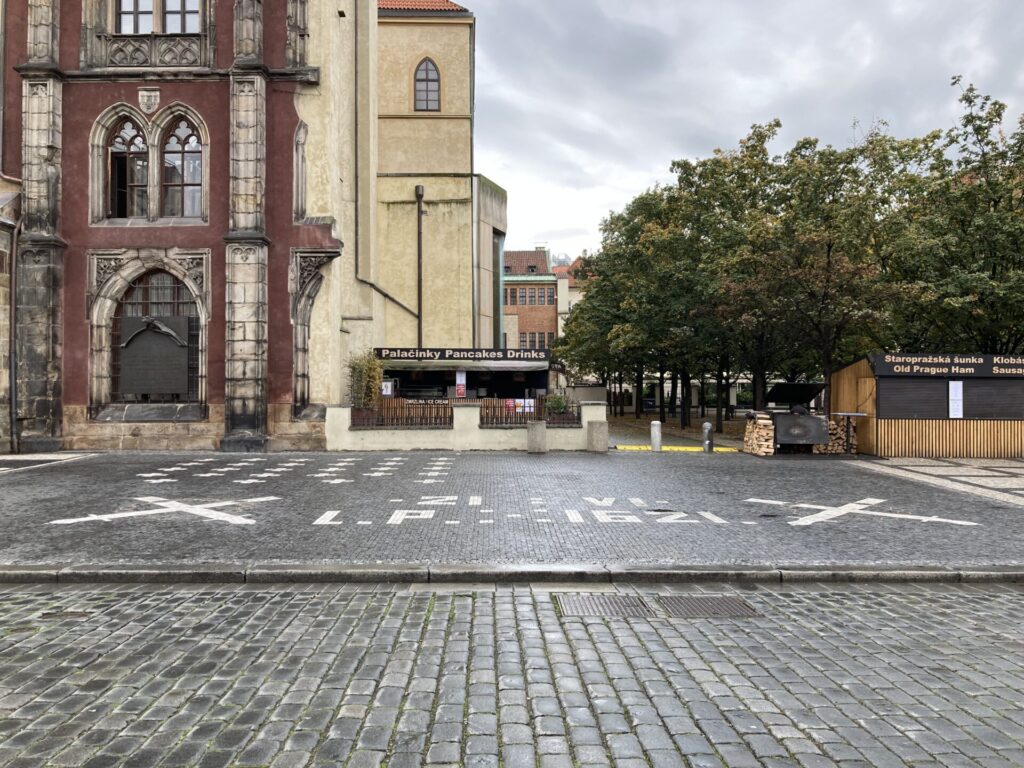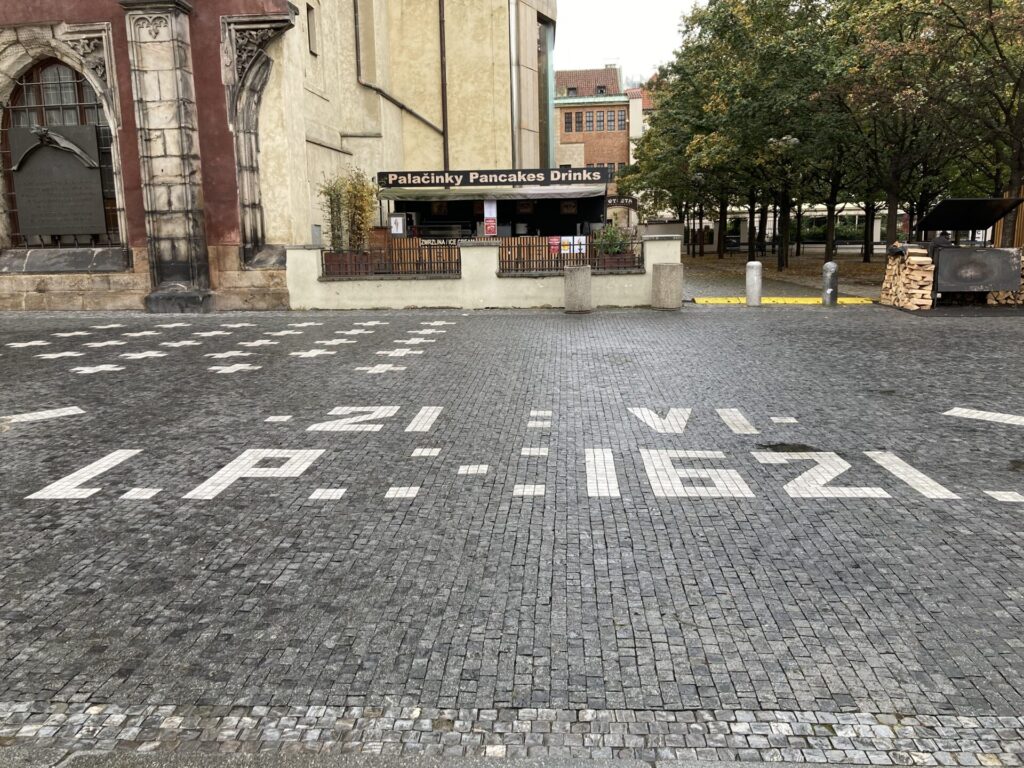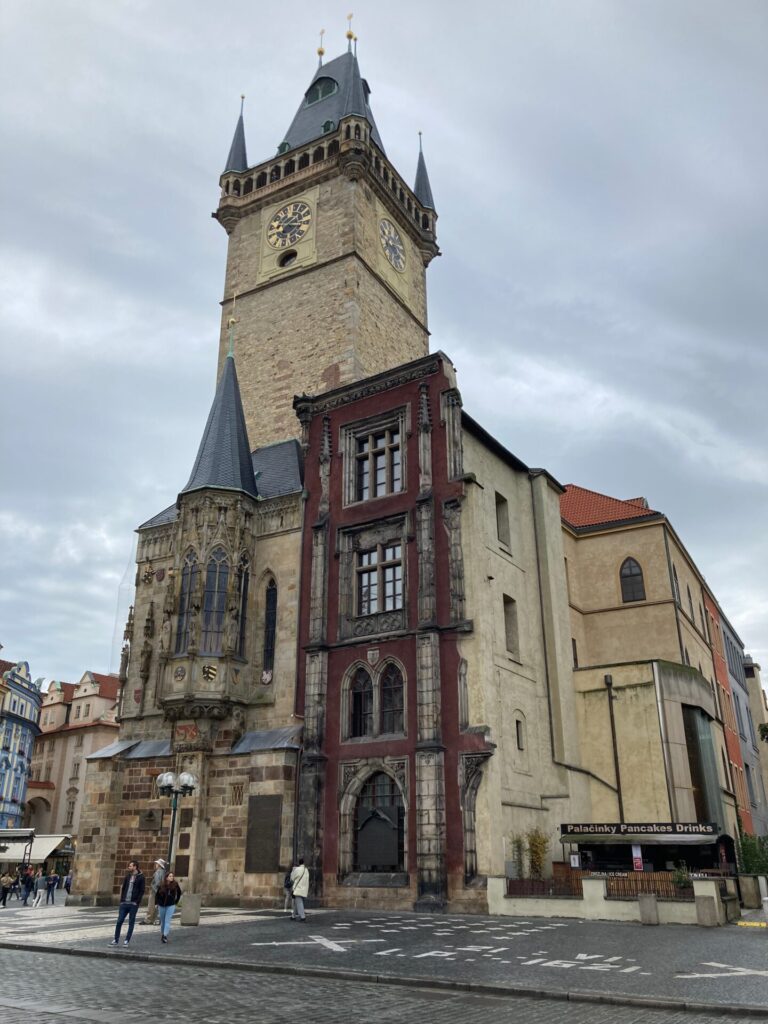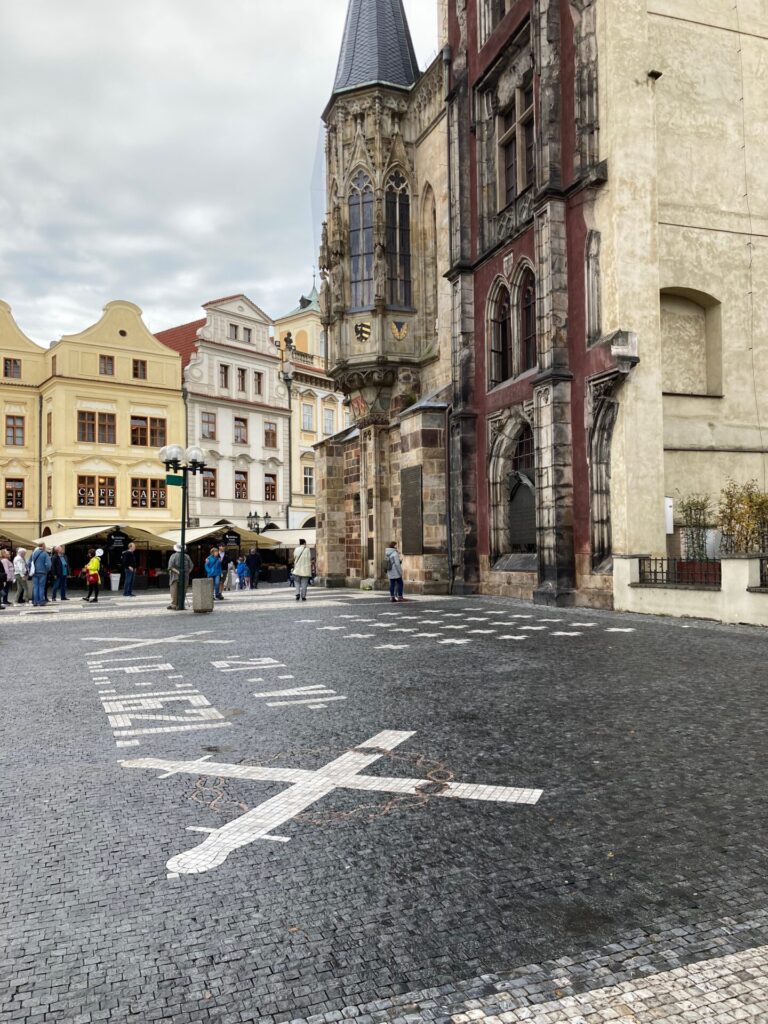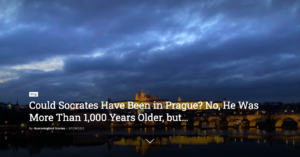27 men were executed in the Old Town Square. On the pavement in front of the Old Town Hall, there are several rows of crosses made of white cobblestones in memory of this mass execution. But why are there 28 crosses?
In November 1620, a great battle took place on the White Mountain. Almost 50,000 mercenaries took part in the battle, the number of fallen soldiers is unknown, it`s estimated between 2 and 5 thousand men. The battle lasted two hours and, despite its short duration, influenced Czech history for 300 years, including violent re-Catholicization.
By February 20, 1621, a total of 61 persons were arrested and kept in prison in the White Tower at Prague Castle. Each of the imprisoned men had to answer 236 questions. Some confessed to high treason, some begged the emperor for mercy, and some laughed at the questions. Some of the detained men were tortured during interrogations.
The trial with them lasted until March 29. However, it did not proceed fairly – the defense did not get to speak at all, and the court’s statement that the guilt was “generally known” was enough to prove guilt. 30 men were sentenced – 27 to death, and 3 to be expelled from the city. Of course, everyone’s property was confiscated.
Of the 27 executed, there were 3 nobles, 7 knights, and 17 burghers.
On the day of the execution, June 21, 1621, the city gates were closed and the Old Town Square was completely surrounded by soldiers. However, the executions on the black stage were surprisingly calm. The most famous Czech executioner, Jan Mydlář, was appointed as the executioner.
(By the way – nobody wanted the wood from the execution site for further use. However, in recent years there has been an assumption that it was used to make a staircase to the attic of the Na Františku Hospital – the hospital existed on the current site on the embankment as early as the mid-14th century.)
Some of the condemned were hanged, others were beheaded, some had their right hand cut off, and some were quartered after death. Twelve severed heads were placed on the wall of the Old Town Bridge Tower, the last of which were not removed until ten years later.
Among those executed was Jan Jessenius. The doctor who was the first in Bohemia to perform a public autopsy, as well as the rector of Charles University and a diplomat. His tongue was cut out before his head was cut off.
City official Mikuláš Diviš received a special punishment, being nailed to the gallows by his tongue. However, he was allowed to go home an hour later.
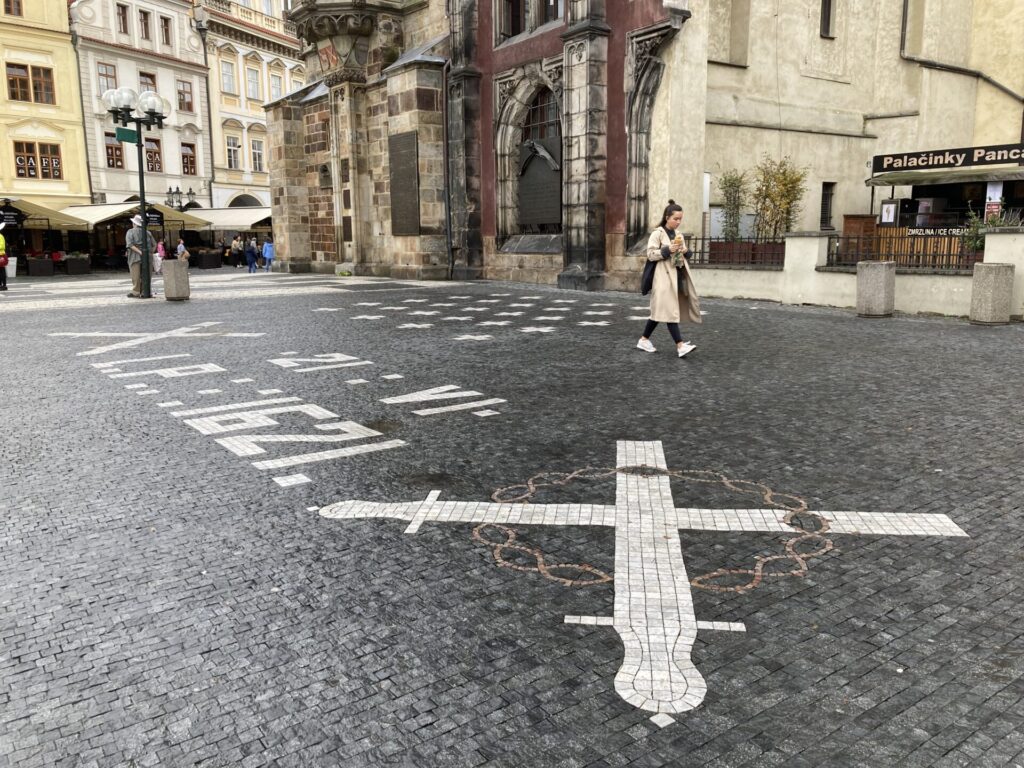
The 27 executed have their white crosses in the pavement of the square. The 28th cross was put together from cobblestones just a few years ago by members of the art group ZTOHOVEN (phonetically it also means 100 shits).
The 28th cross is a remembrance of Martin Fruwein. He tried to escape from prison after being tortured. However, he fell from the White Tower of Prague Castle into the Stag Moat and was dead on the spot. (The second version of his story says that he committed suicide by this jump.) Nevertheless, he did not escape the execution – his already dead body was decapitated and his hand was cut off.
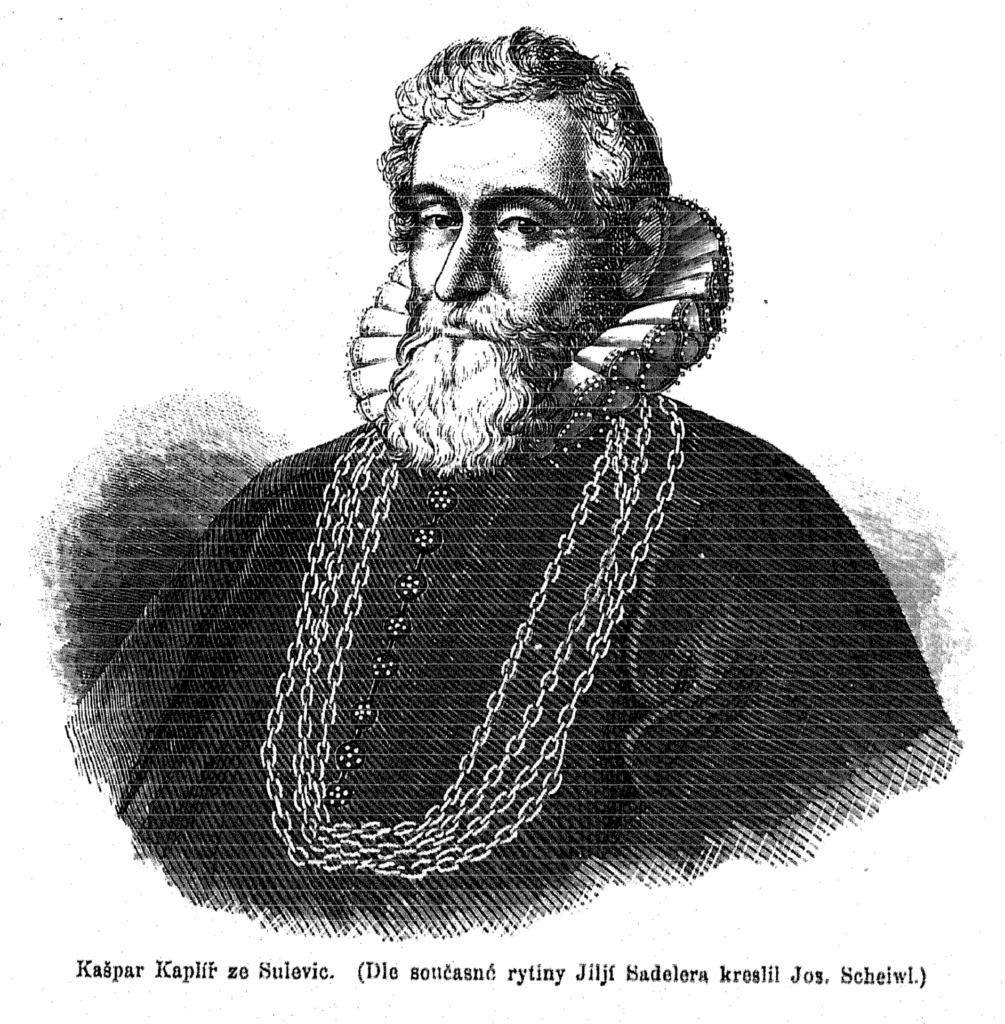
Before the execution, two of the condemned were offered pardon. Knight Kašpar Kaplíř from Sulevice refused it. He was already 86 years old and he did not want to spend the rest of his life in prison.
However, Jan Theodor Sixt from Ottersdorf was pardoned. He was already on his knees to put his head on the execution block when two running men appeared. They were John’s nephews with a message of pardon. Literally seconds before execution. Jan was taken back to prison, from where he was later released and died in exile in 1654.
(If there’s a Hollywood film producer among Our Beautiful Prague’s readers: we are able to write an impressive screenplay about this exciting story from medieval Prague.)













